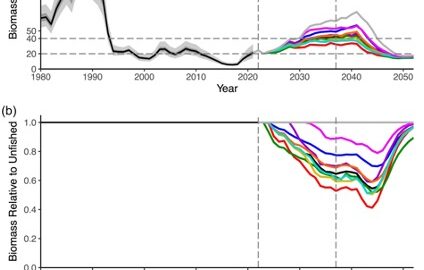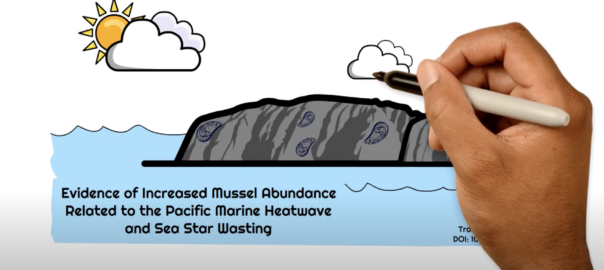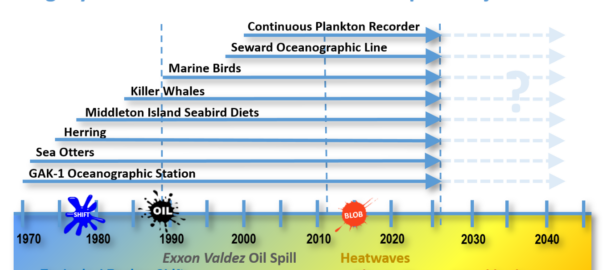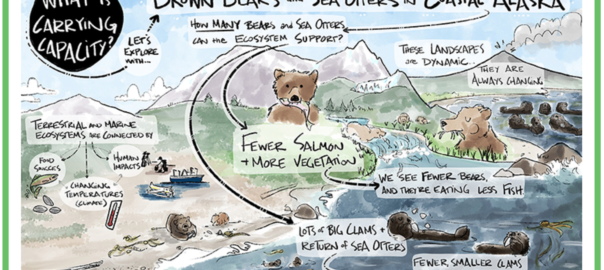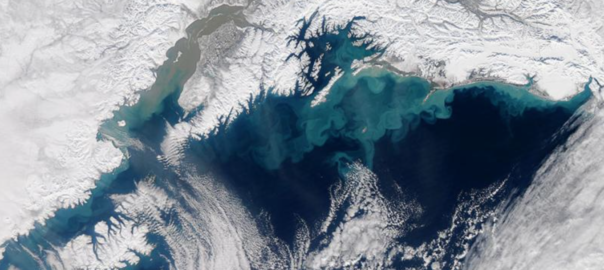Harvest control rules (HCR) describe the factors used when determining when to fish. Graduate student Josh Zahner at the University of Washington tested the impact of applying ten different harvest control rules on the Prince William Sound Pacific herring population to see what would happen to the herring population if changes were made to the fisheries management plan. The graph below shows the predicted biomass, each color representing a distinct HCR. Applying the various HCR had little effect on the final population size in his simulations.
